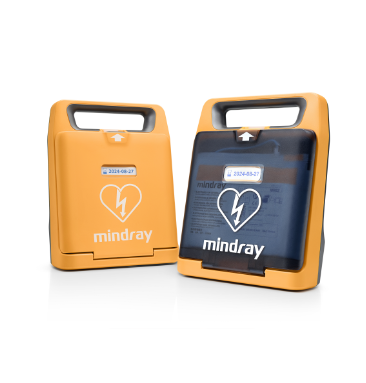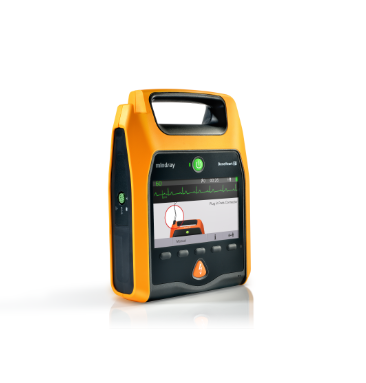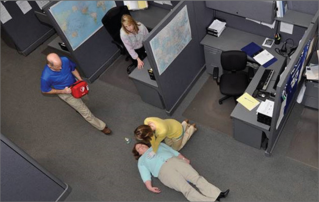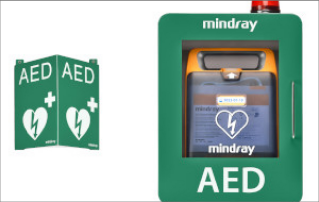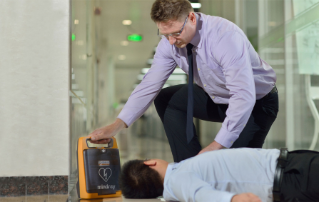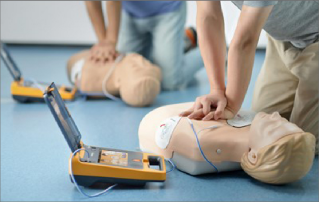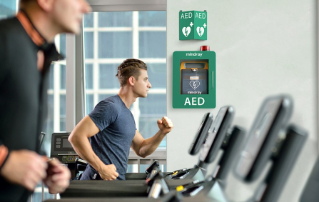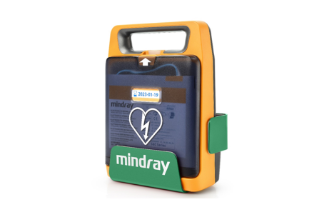AED Use: What Are Recommended Steps to Use an AED?
Mindray 2020-01-12
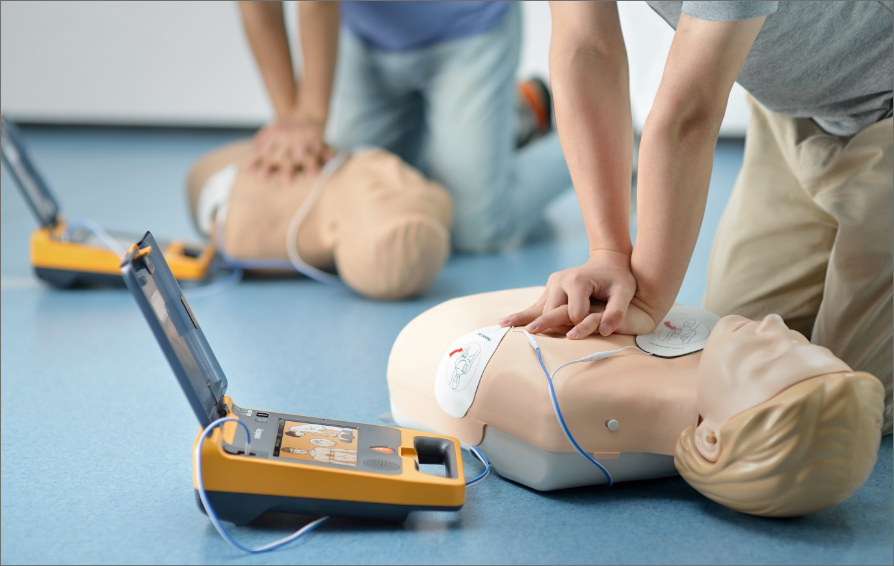
An automated external defibrillator (AED) is a device that plays an important role in many types of medical settings. It can analyze the heart rhythm, inform rescuers that defibrillation is needed, and provide electric shock when necessary. In the accident of sudden cardiac arrest (SCA), blood flow to the brain and all vital organs of the body decreases, resulting in permanent brain damage or even death. It is strongly recommended to use AEDs in time to restore the patient's heart rhythm and save life when SCA patient is discovered.
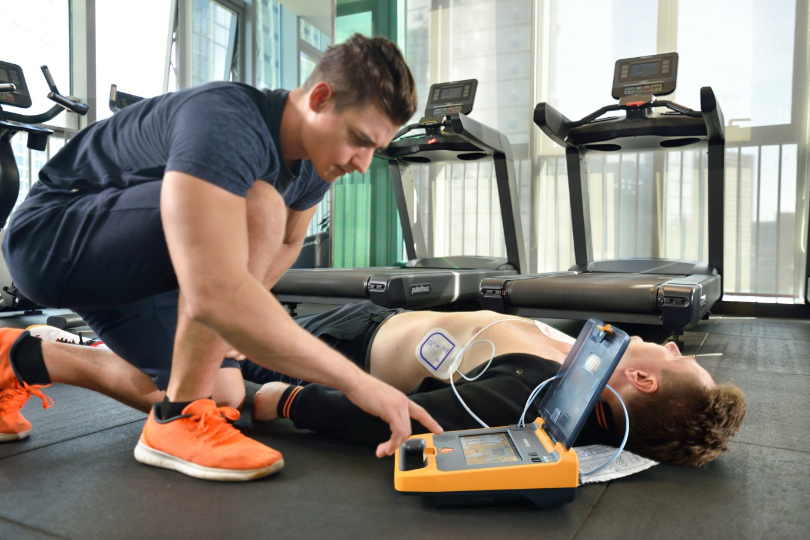
Sudden cardiac arrest (SCA) is when the heart unexpectedly stops beating without any warning. In such a critical situation, if CPR and defibrillation are not done in time, the patient’s survival rate is reduced by 7-10% per minute [1]. Therefore, early intervention is a more appropriate way to help, since waiting for an ambulance and medical professionals to resuscitate the patient will only waste valuable time. Encouraging passers-by to use AEDs and rescue patients can maximize survival rates. However, the fact is that not every bystander is familiar with the operation of an AED device, and many are afraid to act for fear of doing the wrong thing out of panic. Therefore, knowing how to use AEDs properly can boost the confidence of inexperienced rescuers and improve the quality of defibrillation.
Guidelines on How to Use AED
1. Check the patient's condition, call for help and look for an AED
If a person collapses in your presence, he or she has likely experienced shock, fainting, or coma due to cardiac arrest. Check if the person is pulseless, unresponsive, and not breathing; if all are consistent, it indicates that the patient is in sudden cardiac arrest. Then, call for help immediately and explain the situation to the EMS. The next step is to let the patient lie flat on the ground and ask someone nearby to get an AED. While waiting for the AED, you should perform CPR to temporarily pump blood to the brain and other vital organs. When you get the AED unit, turn it on and quickly check if the machine and accessories are working properly. If the AED unit is available, follow the voice prompts.
2. Attaching the AED pads
Remove the patient’s clothing and attach the AED pads to the designated locations following the animation and voice prompts. For adults, the placement of the AED pads follows the rule of anterolateral AED pad placement, i.e., the right pad is placed on the upper right side of the chest, while the left pad is on the lower left side, several inches below the left armpit. For children under 8 years old or under 55 lbs, the placement of the AED pads follows the rule of anterior-posterior placement, i.e., the anterior pad should be placed to the middle point of the line connecting the two nipples, and the posterior pad is placed on the opposite side of the back.
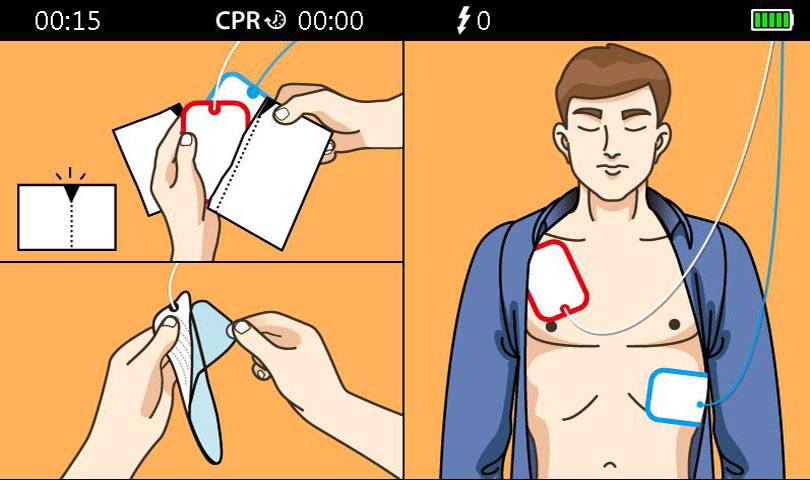
3. Analysis of the heart rhythm
After placing the AED pads in the correct position, you should keep your hands off the patient’s body. The AED will automatically analyze the patient’s heart rate to determine if an electric shock should be given. The two shockable conditions are pulseless ventricular tachycardia and ventricular fibrillation, while the non-shockable conditions are when there is no pulsatile electrical activity in the heart or when the heart does not contract. Remember that an AED device is only effective on an electrically active heart, if the heart stops working and lacks electrical impulses, it cannot change the situation.
4. Delivering a shock
After analyzing the heart rhythm, the AED will issue a command on whether to shock or not. If an AED shock is required, then a fully automatic AED will ask you to step back and deliver the electric shock automatically after ensuring that no one can reach the patient. In the case of a semi-automatic AED device, you will be required to press a button to deliver the shock.
After the shock, the abnormal fibrillation of the patient's heart is likely to be removed by the current, but the patient's heartbeat may not have returned to normal with a single defibrillation. At this point, the AED machine will advise you to perform CPR for two minutes to manually pump blood throughout the patient's body and convey oxygen to vital organs. The AED will then re-analyze the heart rhythm, and if it returns to normal, the AED will advise against further shocks. Saving a patient from SCA often requires long-time CPR and multiple shocks, and you should continue to help until the patient regains consciousness and starts to breathe, cough, or open the eyes. During this process, you should keep the defibrillator on and not remove the AED pads until medical professionals arrive on the scene to take over the patient.
Precautions for the Use of AED Devices
Although AED devices are simple and easy to use, you should be careful when using them. This is to avoid weakening the defibrillation effect and also unnecessary harm to the patient caused by improper use of AED.
- The patient's chest should be wiped before attaching the AED pads. Make sure that the skin is free of sweat and water droplets. However, remember not to wipe the skin with alcohol, as alcohol is flammable, and the current released by the AED may ignite it, resulting in a hazard.
- Do not touch or get close to the patient while the AED unit is delivering a shock. This is to prevent dispersing the shock energy and affecting the defibrillation effect.
- Do not touch or move the patient while the AED is analyzing, as this may stop the analysis or affect its accuracy.
- To prevent interruption of analysis, keep the mobile phone and radio at least 6 feet away from the patient.
- Do not use the AED machine if the patient is lying on a conductive surface such as metal. The electric shock released by the AED may be transferred to others who who come into contact with the conductors.
- If the patient is a child under 8 years old or weighs less than 55 pounds, switch to child mode and try to use specific pediatric pads (if available) as they require less energy for the shock.
- If the patient has a nitro-glycerine patch or other similar patches that will interfere with shock delivery, remove it before applying the AED pad.
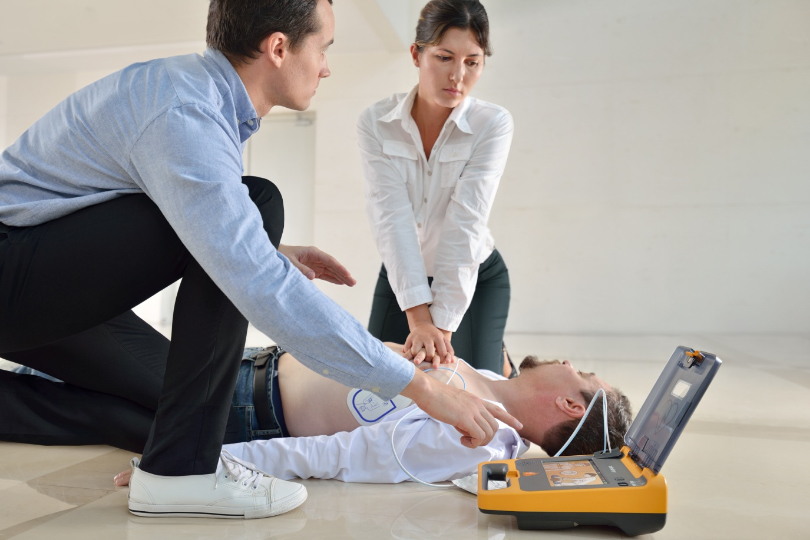
About Mindray BeneHeart C series AED
Applying CPR alone cannot save a patient in every situation as it can only pump blood but not return the heart rhythm to normal. That is why AED devices are important for the emergency treatment of cardiac arrest.
Mindray has been using patented technologies to improve the quality and ease of use of AEDs, ensuring the effectiveness and efficiency of resuscitation even for first-time rescuers. The Mindray AED utilizes ResQNaviTM technology's voice prompt, visual image guidance, and interactive rescue instructions to make it convenient for both experienced users and novices. It automatically adjusts the voice guidance depending on the user's proficiency. Take placing the AED pads as an example. For a skilled rescuer, the Mindray AED simply tells the user to "undress and attach the electrode according to the diagram". When the ResQNaviTM technology finds that this is a non-experienced user, it will turn to give more detailed and specific instructions: "Remove pads package from lid of AED. Tear open package. Apply pads as shown on pads".
Considering the actual AED application scenario and the medical background of the user, choosing an easy-to-use AED is essential to improve the efficiency of cardiac arrest rescue. Mindray, with unremitting exploration and years of technological innovation, offers an excellent solution with the BeneHeart C Series AEDs to the common challenge of improving AEDs’ ease of operation. For more information about the Mindray BeneHeart C Series AEDs on Mindray’s official website.
References:
[1] Recent advances and controversies in adult cardiopulmonary resuscitation. Available at: https://www.ncbi.nlm.nih.gov/pmc/articles/PMC2600120/ (Accessed: 8 Sept. 2022)
